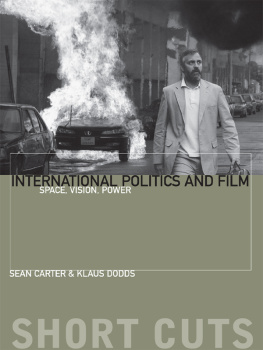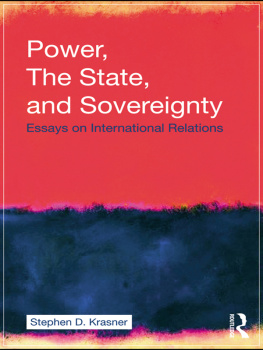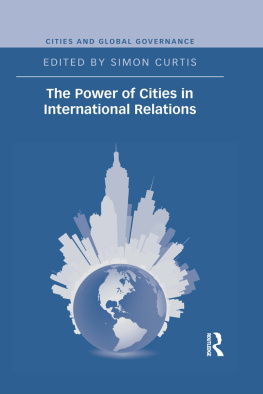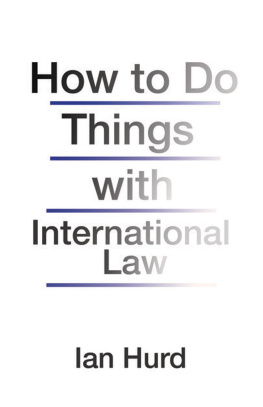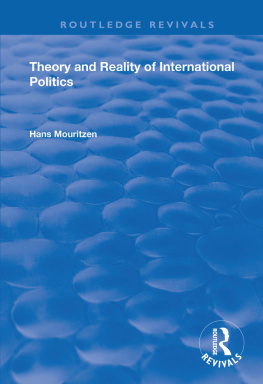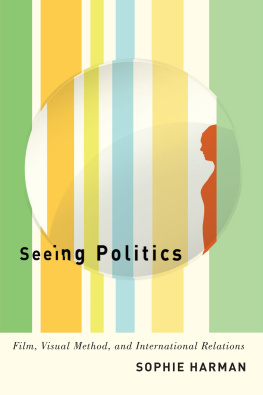SHORT CUTS
INTRODUCTIONS TO FILM STUDIES
OTHER TITLES IN THE SHORT CUTS SERIES
THE HORROR GENRE: FROM BEELZEBUB TO BLAIR WITCH Paul Wells
THE STAR SYSTEM: HOLLYWOODS PRODUCTION OF POPULAR IDENTITIES Paul McDonald
SCIENCE FICTION CINEMA: FROM OUTERSPACE TO CYBERSPACE Geoff King and Tanya Krzywinska
EARLY SOVIET CINEMA: INNOVATION, IDEOLOGY AND PROPAGANDA David Gillespie
READING HOLLYWOOD: SPACES AND MEANINGS IN AMERICAN FILM Deborah Thomas
DISASTER MOVIES: THE CINEMA OF CATASTROPHE Stephen Keane
THE WESTERN GENRE: FROM LORDSBURG TO BIG WHISKEY John Saunders
PSYCHOANALYSIS AND CINEMA: THE PLAY OF SHADOWS Vicky Lebeau
COSTUME AND CINEMA: DRESS CODES IN POPULAR FILM Sarah Street
MISE-EN-SCNE: FILM STYLE AND INTERPRETATION John Gibbs
NEW CHINESE CINEMA: CHALLENGING REPRESENTATIONS Sheila Cornelius with Ian Haydn Smith
ANIMATION: GENRE AND AUTHORSHIP Paul Wells
WOMENS CINEMA: THE CONTESTED SCREEN Alison Butler
BRITISH SOCIAL REALISM: FROM DOCUMENTARY TO BRIT GRIT Samantha Lay
FILM EDITING: THE ART OF THE EXPRESSIVE Valerie Orpen
AVANT-GARDE FILM: FORMS, THEMES AND PASSIONS Michael OPray
PRODUCTION DESIGN: ARCHITECTS OF THE SCREEN Jane Barnwell
NEW GERMAN CINEMA: IMAGES OF A GENERATION Julia Knight
EARLY CINEMA: FROM FACTORY GATE TO DREAM FACTORY Simon Popple and Joe Kember
MUSIC IN FILM: SOUNDTRACKS AND SYNERGY Pauline Reay
MELODRAMA: GENRE, STYLE, SENSIBILITY John Mercer and Martin Shingler
FEMINIST FILM STUDIES: WRITING THE WOMAN INTO CINEMA Janet McCabe
FILM PERFORMANCE: FROM ACHIEVEMENT TO APPRECIATION Andrew Klevan
NEW DIGITAL CINEMA: REINVENTING THE MOVING IMAGE Holly Willis
THE MUSICAL: RACE, GENDER AND PERFORMANCE Susan Smith
TEEN MOVIES: AMERICAN YOUTH ON SCREEN Timothy Shary
FILM NOIR: FROM BERLIN TO SIN CITY Mark Bould
DOCUMENTARY: THE MARGINS OF REALITY Paul Ward
THE NEW HOLLYWOOD: FROM BONNIE AND CLYDE TO STAR WARS Peter Krmer
ITALIAN NEO-REALISM: REBUILDING THE CINEMATIC CITY Mark Shiel
WAR CINEMA: HOLLYWOOD ON THE FRONT LINE Guy Westwell
FILM GENRE: FROM ICONOGRAPHY TO IDEOLOGY Barry Keith Grant
ROMANTIC COMEDY: BOY MEETS GIRL MEETS GENRE Tamar Jeffers McDonald
SPECTATORSHIP: THE POWER OF LOOKING ON Michele Aaron
SHAKESPEARE ON FILM: SUCH THINGS THAT DREAMS ARE MADE OF Carolyn Jess-Cooke
CRIME FILMS: INVESTIGATING THE SCENE Kirsten Moana Thompson
THE FRENCH NEW WAVE: A NEW LOOK Naomi Greene
CINEMA AND HISTORY: THE TELLING OF STORIES Mike Chopra-Gant
GERMAN EXPRESSIONIST CINEMA: THE WORLD OF LIGHT AND SHADOW Ian Roberts
FILM AND PHILOSOPHY: TAKING MOVIES SERIOUSLY Daniel Shaw
CONTEMPORARY BRITISH CINEMA: FROM HERITAGE TO HORROR James Leggott
RELIGION AND FILM: CINEMA AND THE RE-CREATION OF THE WORLD S. Brent Plate
FANTASY CINEMA: IMPOSSIBLE WORLDS ON SCREEN David Butler
FILM VIOLENCE: HISTORY, IDEOLOGY, GENRE James Kendrick
NEW KOREAN CINEMA: BREAKING THE WAVES Darcy Paquet
FILM AUTHORSHIP: AUTEURS AND OTHER MYTHS C. Paul Sellors
THE VAMPIRE FILM: UNDEAD CINEMA Jeffrey Weinstock
HERITAGE FILM: NATION, GENRE AND REPRESENTATION Beln Vidal
QUEER CINEMA: SCHOOLGIRLS, VAMPIRES AND GAY COWBOYS Barbara Mennel
ACTION MOVIES: THE CINEMA OF STRIKING BACK Harvey OBrien
BOLLYWOOD: GODS, GLAMOUR AND GOSSIP Kush Varia
THE SPORTS FILM: GAMES PEOPLE PLAY Bruce Babington
THE HEIST FILM: STEALING WITH STYLE Daryl Lee
INTERNATIONAL POLITICS AND FILM
SPACE, VISION, POWER
SEAN CARTER & KLAUS DODDS
WALLFLOWER
LONDON and NEW YORK
A Wallflower Press Book
Published by
Columbia University Press
Publishers Since 1893
New York Chichester, West Sussex
cup.columbia.edu
Copyright Sean Carter & Klaus Dodds 2014
All rights reserved.
E-ISBN 978-0-231-85059-9
Wallflower Press is a registered trademark of Columbia University Press.
A complete CIP record is available from the Library of Congress
ISBN 978-0-231-16971-4 (pbk. : alk. paper)
ISBN 978-0-231-85059-9 (e-book)
A Columbia University Press E-book.
CUP would be pleased to hear about your reading experience with this e-book at .
CONTENTS
We would like to thank Yoram Allon, Commissioning Editor at Wallflower Press, for providing us with the opportunity to contribute to the excellent Short Cuts series. We are even more grateful for the extraordinary patience that he has shown throughout the course of the project.
Both of us have benefited from using film to teach Critical Geopolitics at the University of Exeter and Royal Holloway respectively, and we are grateful for the feedback provided by our students over the years. We have also both benefited enormously from supervising PhD students who have conducted work in the broad fields of culture and geopolitics, and from supportive families, who generously allow us to indulge our interests in film and geopolitics.
The book has been greatly improved by the excellent proofreading skills of Philip Kirby and the efficient compilation of the filmography and index by Rachael Squire. Earlier versions of the book were read by Peter Adey, Jason Dittmer and Nick Gill and we are thankful for their helpful comments. Part of the analysis of No Mans Land is based on an unpublished draft of a paper by Sean Carter and Derek McCormack. We are immensely grateful to Derek for allowing us to draw on some of this material.
Of course, any flaws in the writing, argument or analysis rest with the authors.
Sean Carter & Klaus Dodds
April 2014
In Syriana (2005), CIA agent Bob Barnes (George Clooney) is sent to the fictional Middle-Eastern state from which the film takes its title. A complex thriller is constructed around the murky world of inter-state relations, corporate greed and the everyday lives of those caught up in the attempts of more powerful agents to exert some kind of control over energy resources. In this sense the film nicely captures much of what we are interested in exploring in this book, for we take international politics to not just refer to the most dramatic instances of inter-state conflict (such as war) but to a much broader and, in many ways, more mundane set of practices which constitute the political world. Moreover, we see these practices as restricted not just to nation-states (though they remain significant international actors) but as extending to a whole range of actors and interests, including, as Syriana suggests, a variety of agents and sites such as CIA operatives, migrant workers, energy analysts, lawyers and their families.
Still, at first glance, many might think that the stuffy world of international politics might have little to do with film and other forms of popular culture. When we were both studying political geography and international relations at British universities in the late 1980s and early 1990s, it was filled with sombre accounts of men (in the main) and particular agents, sites and processes such as diplomats, international summits and foreign policy analysis, respectively. Film and other popular media such as television would have been seen as either entertainment and/or mechanisms for representing the unfolding dramas of international politics. In retrospect, this, we would argue, is a rather restricted view of both international politics and popular culture, including film, and one that inadvertently reveals particular disciplinary engagements.

